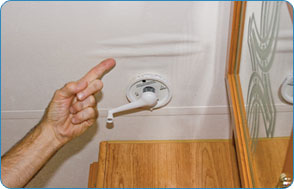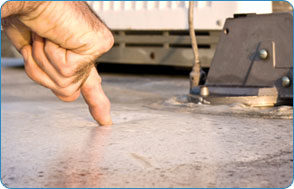 |
|||
 
If you haven't inspected for leaks lately, or are thinking of buying a used RV, a leak check should be on your To Do list. That doesn't mean you should expect leaks, just that your home on wheels comes under a lot more stress than a stationary structure. An RV is a moveable object that experiences bouncing, shaking, twisting, baking, freezing and many other challenges to its structure that can contribute to leaks. |
|||
| Leaks can be very insidious — that is, they may not be noticeable until significant damage has been done. For example, water can seep into the studs and insulation inside your sidewalls, unseen as it wreaks havoc by soaking insulation and spreading wood rot and mold. Think about the costs involved in fixing this and you'll understand why any RV repair shop will tell you that leak damage is one of the most expensive repairs they make. | |||
The owner had noticed the bumps but, because they were so small, he didn't bother to investigate further. In the meantime, leaking water was gradually damaging his motorhome roof. For your inside inspection, look for such bumps or places where the interior wall has detached from the studs. Check for areas with mildew or mold, wet patches, or water stains and streaks. After a rain is a good time to look for pools of water and other signs of moisture where it shouldn't be. This includes inspecting the dark corners of your cabinets and closets, even if you have to move stuff around. I've often looked in cabinets or closets and literally found mushrooms growing! So be aware and don't dismiss such signs, even if they appear small. They could indicate a bigger problem that you definitely don't want to have! In Part Two we'll address inspecting your roof on the outside. But before that, our next report will talk about roof safety procedures. Bye for now. |
|||
You are receiving this email because you have asked to receieve industry related product and service announcements from Dicor Products. If you would no longer like to receive these emails you may unsubscribe at any time using the link below. |

